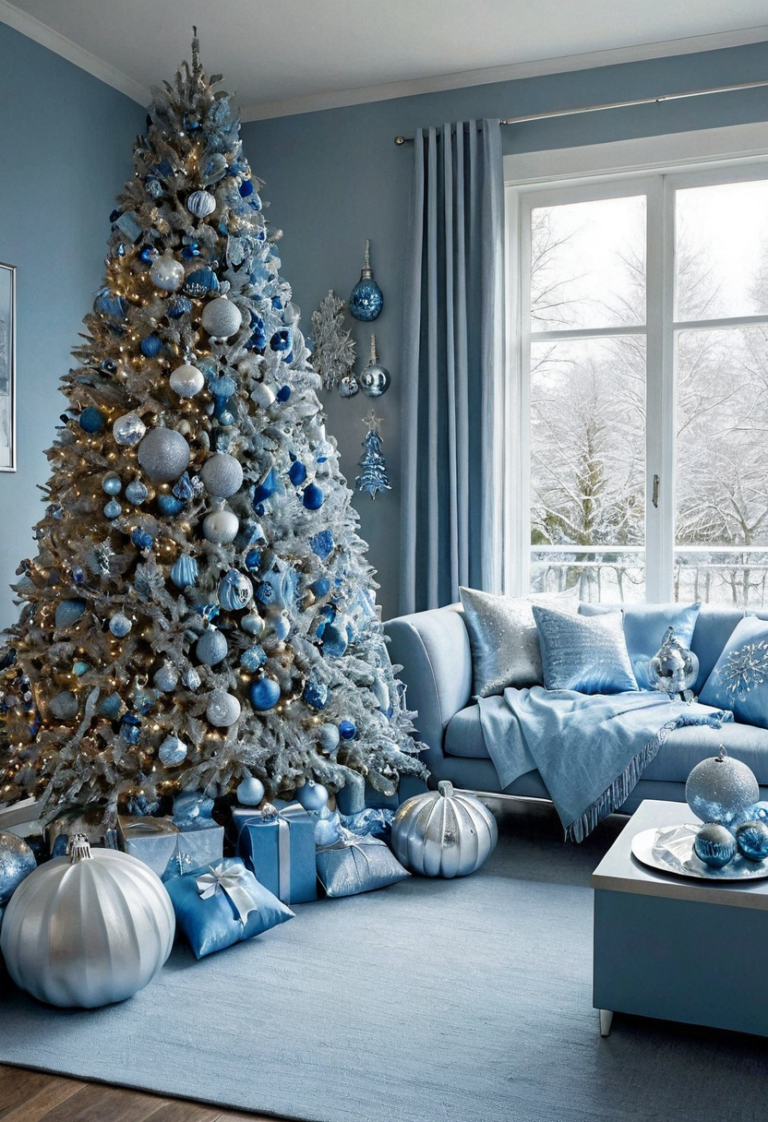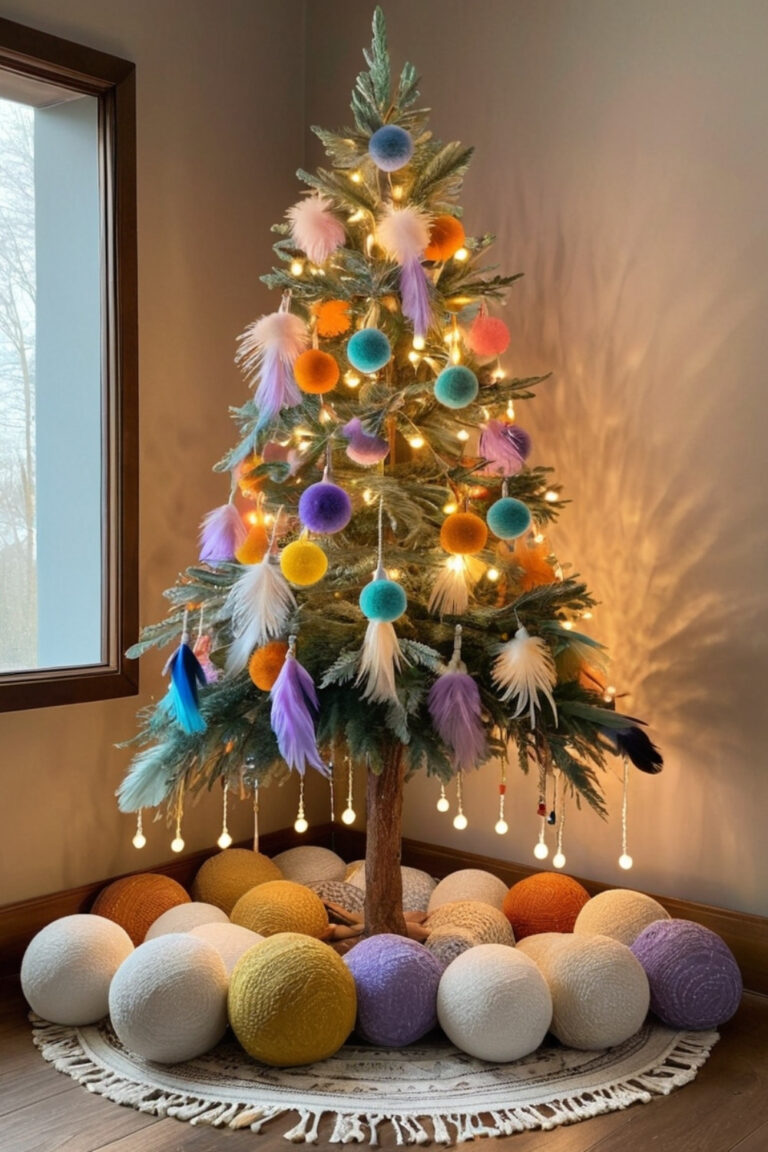In my experience working with homeowners on seasonal decorating projects that emphasize natural and rustic elements, I’ve observed that woodsy Christmas décor often creates some of the most warm and welcoming holiday environments. Through various nature-inspired decorating consultations, I’ve learned that rustic holiday design typically combines natural materials, handcrafted elements, and outdoor-inspired themes while maintaining fire safety and appropriate material treatment for indoor use.
Note: For any electrical installations, open flame considerations, or modifications involving natural materials, always consult with safety guidelines and building codes. Ensure proper treatment of natural materials for indoor use and fire safety compliance.
What makes woodsy Christmas decorating particularly appealing is its emphasis on sustainable materials, handcrafted elements, and connections to natural environments while creating cozy, authentic holiday atmospheres. I’ve found that homeowners often choose rustic holiday themes because they typically provide opportunities for family craft activities and sustainable decoration choices while honoring traditional holiday craftsmanship.
The key to successful woodsy Christmas decorating often lies in selecting properly treated natural materials, ensuring fire safety with all installations, and balancing rustic elements with functional daily living needs. Effective designs typically incorporate foraged materials, handcrafted details, and natural textures while ensuring all elements meet safety requirements and indoor environmental standards.
Here are 23 woodsy Christmas décor concepts that often work well in various home styles and climates, based on observations from numerous nature-inspired holiday decorating projects.
1. Birch Branch Entrance Display: Natural Welcome Elements
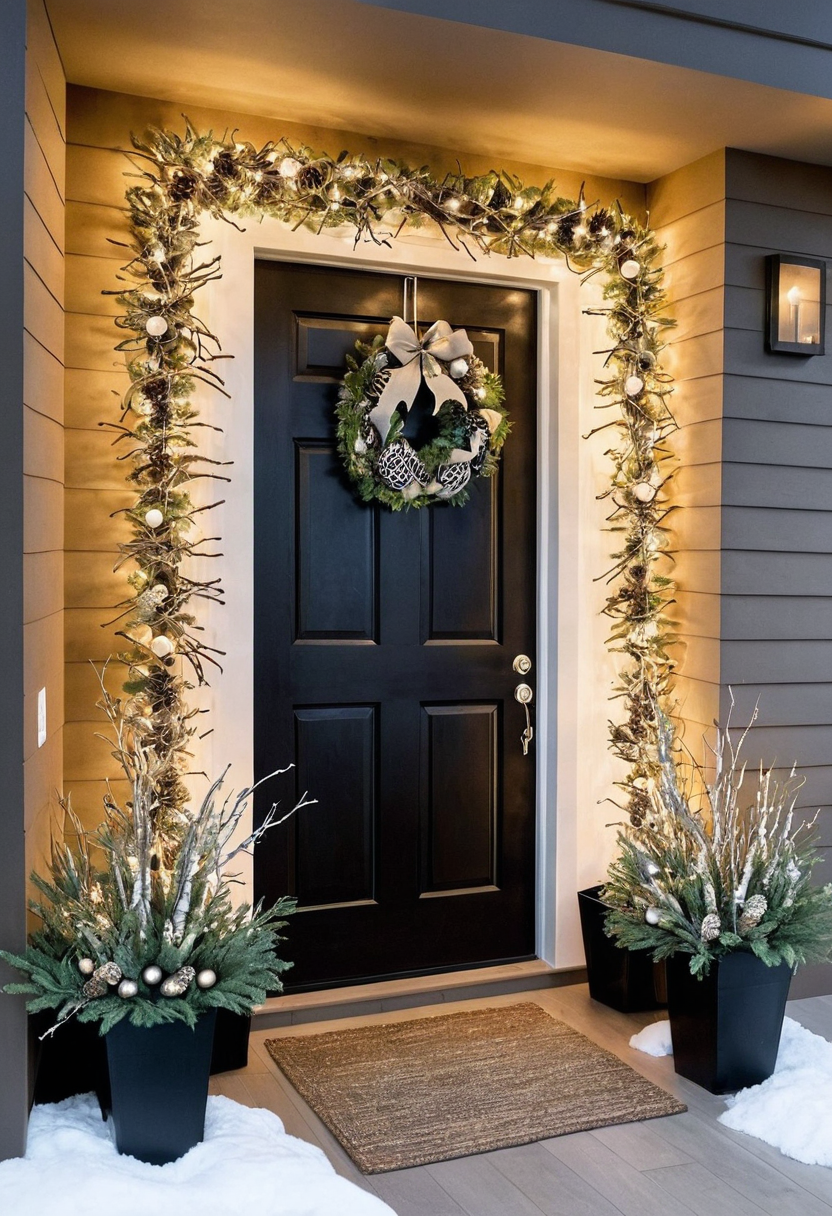
This organic approach often appeals to homeowners wanting forest-inspired entryway decorations. Birch branches with lighting typically create magical threshold experiences while utilizing sustainable, locally available materials.
Design consideration: Natural branches often require proper cleaning and treatment for indoor use, while electrical elements typically need weatherproof installation and GFCI protection for outdoor applications.
Practical benefit: Natural materials often provide sustainable decoration options, while entrance displays typically create welcoming first impressions that set holiday atmosphere expectations.
2. Vintage Transportation Display: Nostalgic Winter Elements
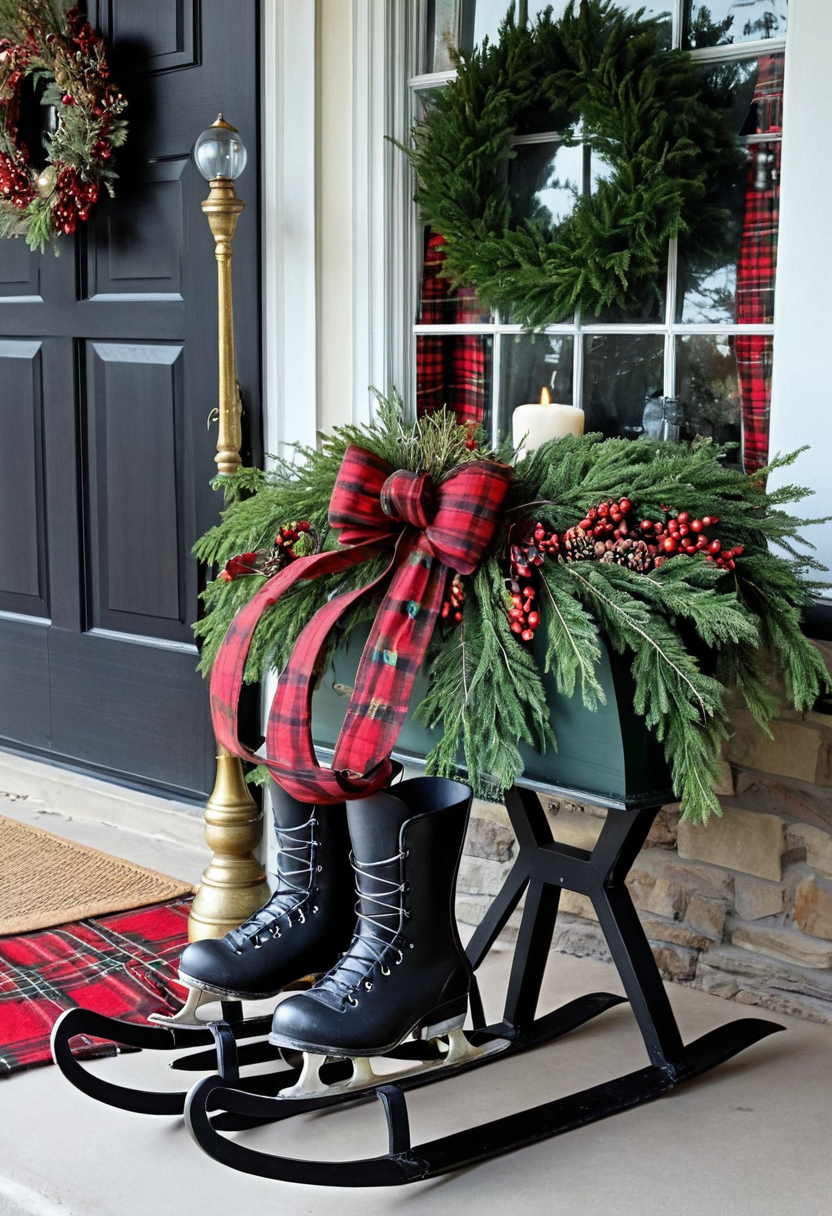
This traditional approach often appeals to families appreciating historical winter recreation themes. Antique sleds with seasonal accessories typically create nostalgic environments while showcasing vintage craftsmanship.
Design consideration: Vintage items often require evaluation for structural integrity and appropriate display methods, while outdoor displays typically need weather protection and secure positioning.
Practical benefit: Historical elements often provide conversation topics and family memory connections, while vintage displays typically create unique character that cannot be replicated with modern items.
3. Natural Container Gardens: Seasonal Organic Arrangements
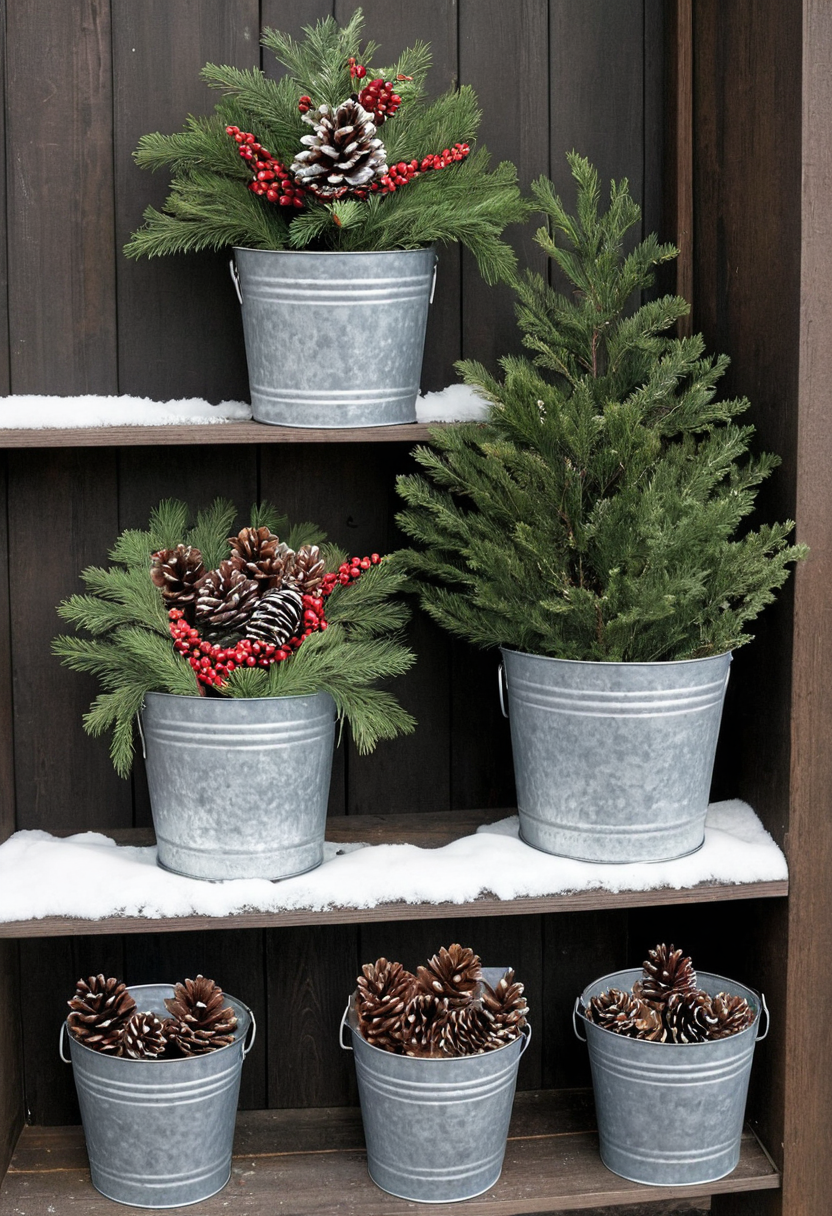
This botanical strategy often appeals to homeowners wanting fresh, aromatic holiday displays. Galvanized containers with natural elements typically provide rustic aesthetics while incorporating pleasant seasonal scents.
Design consideration: Fresh materials often require water management and regular replacement, while metal containers typically need drainage consideration and protection from rust.
Practical benefit: Natural arrangements often provide pleasant aromatherapy, while fresh elements typically create stronger connections to seasonal outdoor environments.
4. Handcrafted Wood Ornaments: Personal Artistic Elements
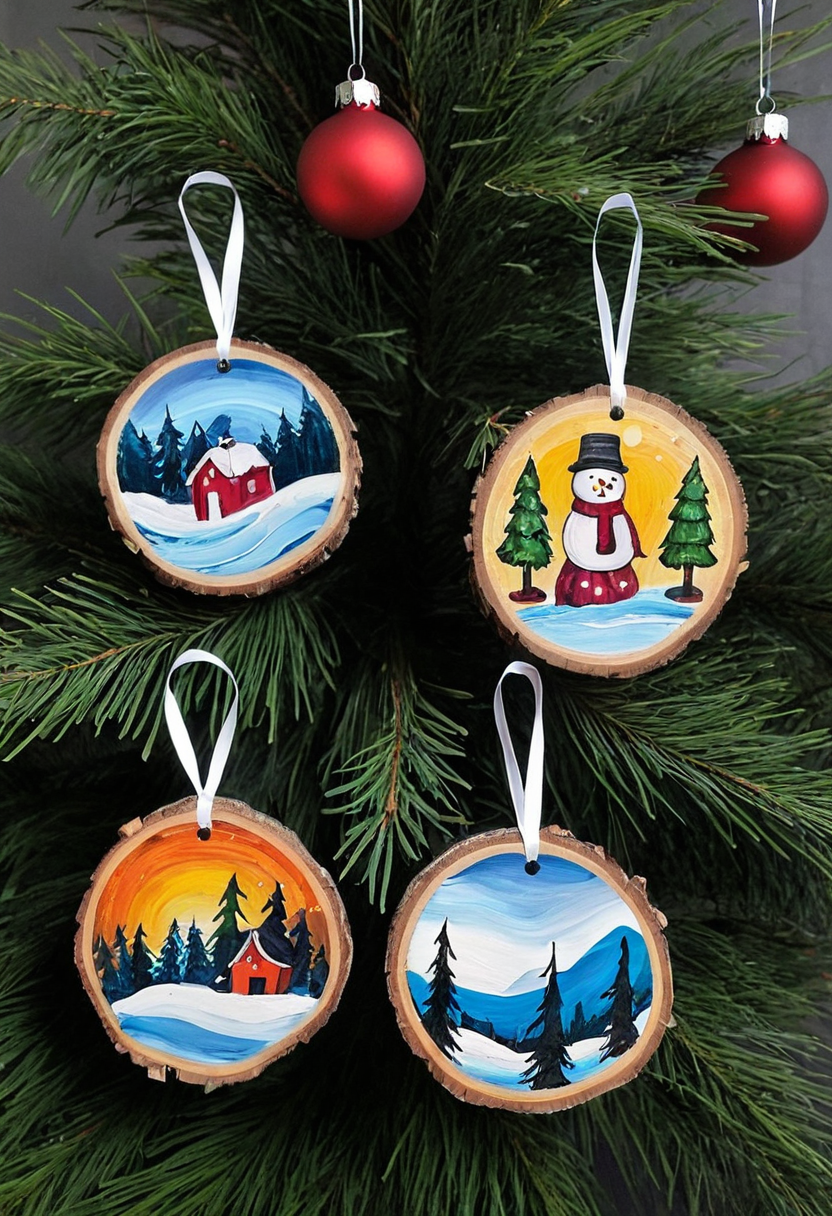
This creative approach often appeals to families enjoying craft activities and personalized decorations. Hand-painted wood slices typically provide unique, meaningful ornaments while supporting sustainable material use.
Design consideration: Wood crafts often require appropriate sealing and finishing for longevity, while painted elements typically need non-toxic materials and proper ventilation during creation.
Practical benefit: Handmade ornaments often provide family activity opportunities, while personal creations typically create irreplaceable, meaningful holiday memories.
5. Natural Fiber Garland: Textural Tree Enhancement
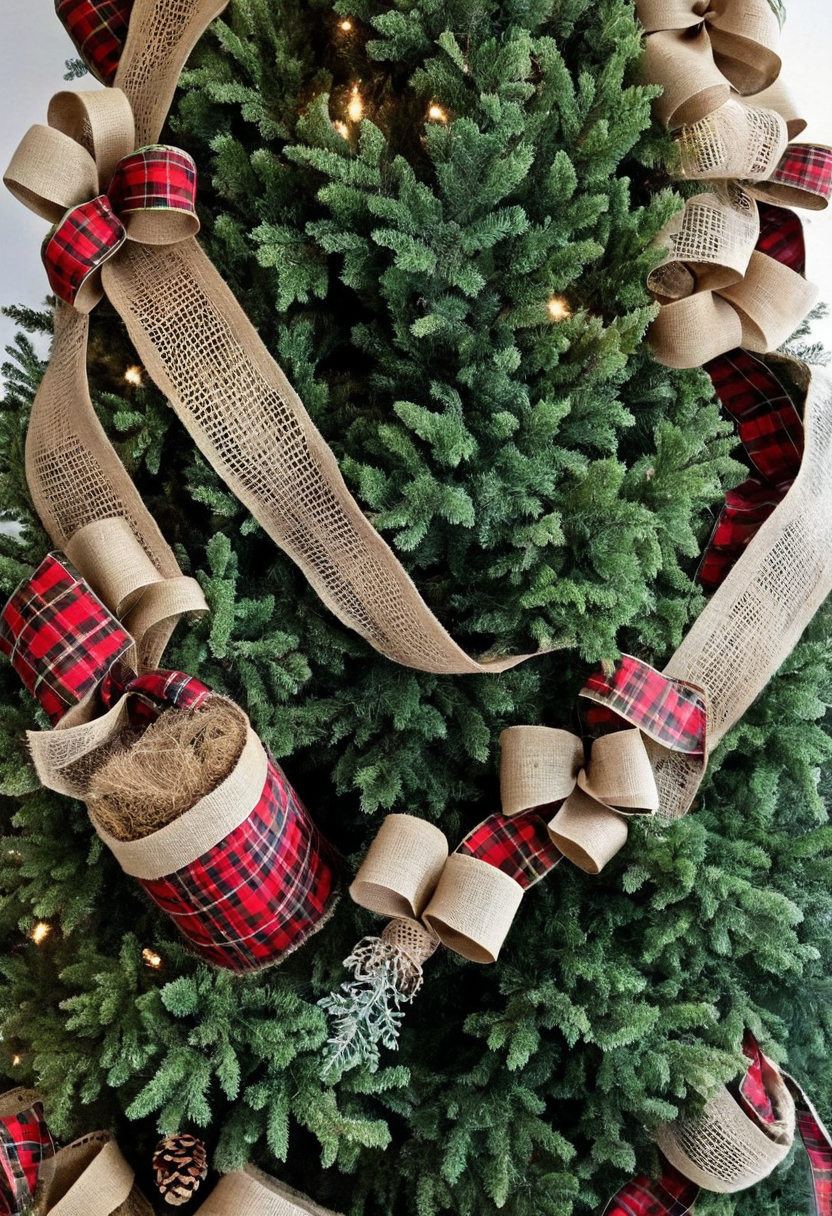
This textile strategy often appeals to homeowners appreciating farmhouse aesthetics and natural textures. Burlap and fabric combinations typically create cozy, layered environments while providing sustainable decoration options.
Design consideration: Natural fibers often require fire-resistant treatment when used near lighting, while fabric elements typically need consideration of cleaning and storage requirements.
Practical benefit: Natural textiles often create warm, inviting atmospheres, while handcrafted garlands typically provide opportunities for personal customization and creative expression.
6. Antler-Inspired Centerpieces: Wildlife Theme Integration
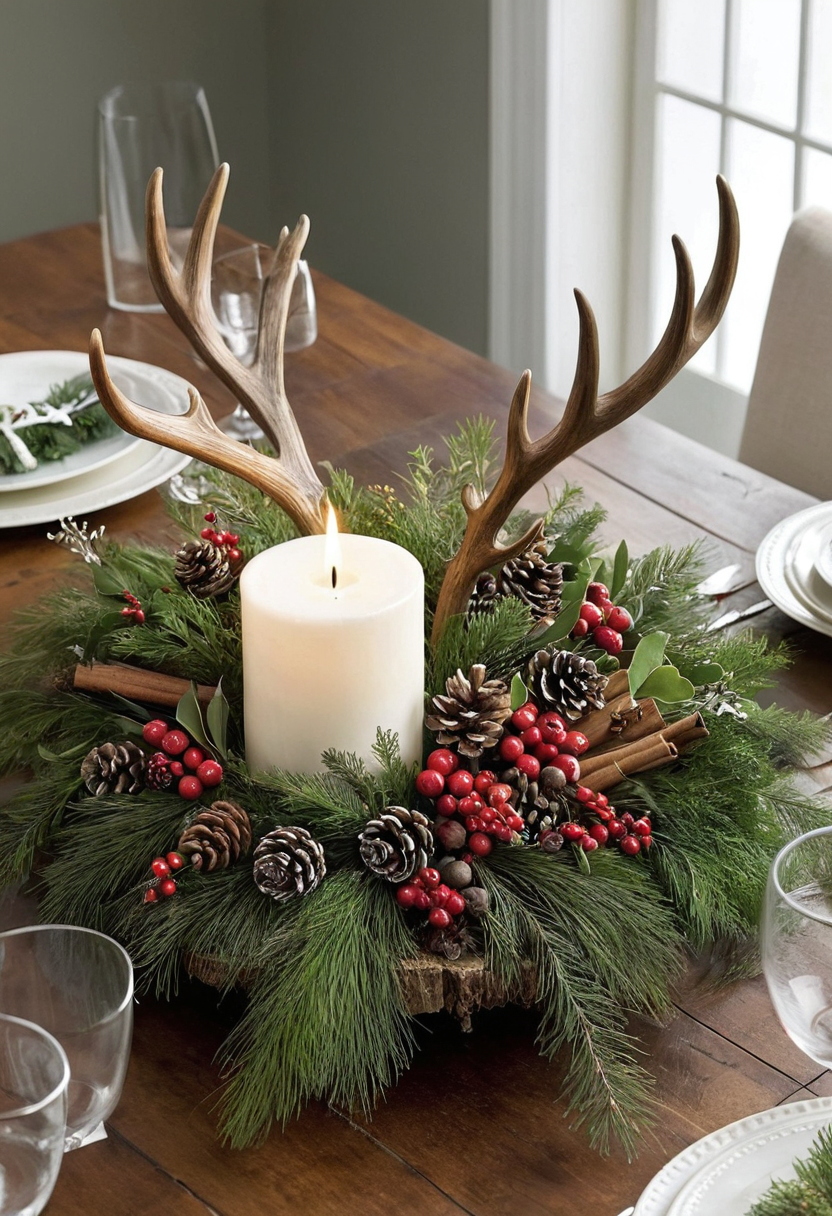
This nature-focused approach often appeals to homeowners appreciating wildlife aesthetics and outdoor themes. Faux antler displays with botanical elements typically create impressive focal points while honoring natural beauty.
Design consideration: Large centerpieces often require stable surfaces and appropriate sizing for table function, while natural elements typically need regular maintenance and replacement.
Practical benefit: Wildlife themes often create conversation topics, while natural centerpieces typically provide educational opportunities about forest ecosystems and wildlife appreciation.
7. Container Scene Creation: Miniature Winter Landscapes
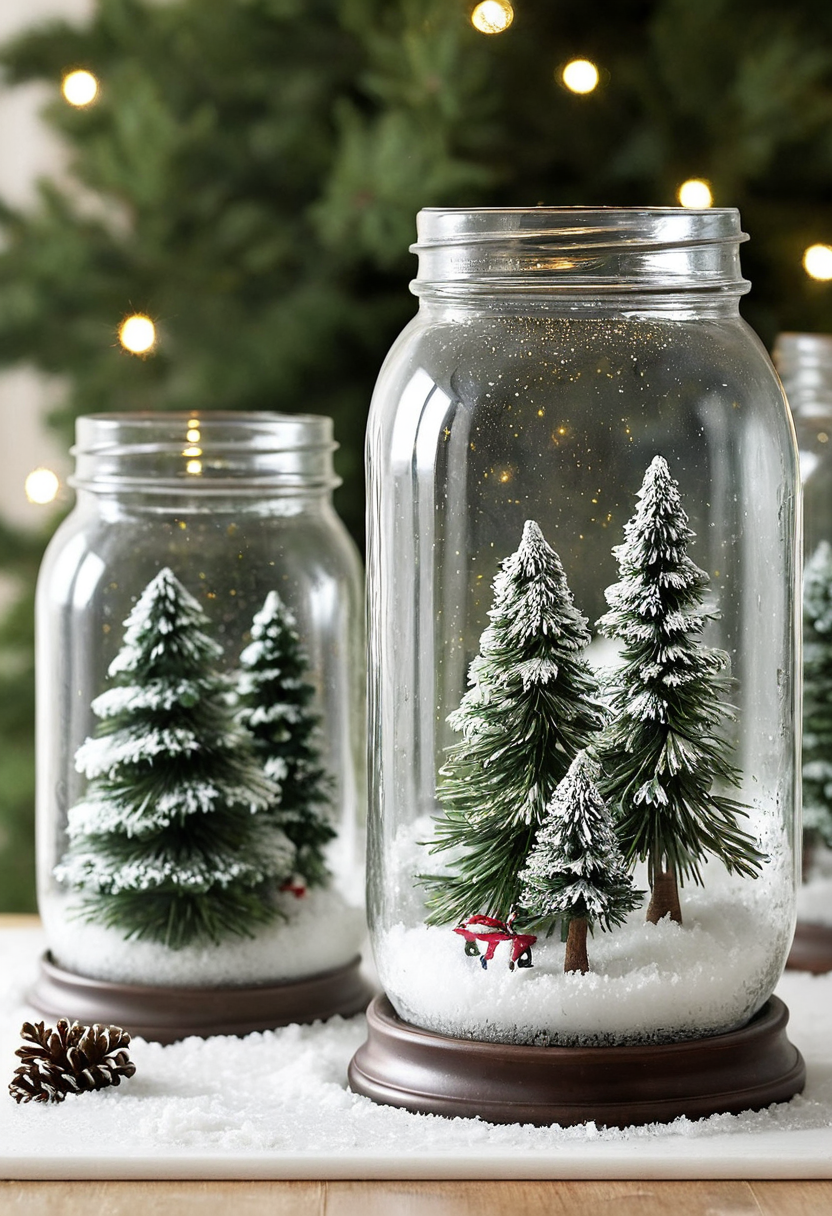
This craft approach often appeals to families wanting contained, creative holiday projects. Mason jar displays with miniature elements typically provide manageable craft activities while creating charming decorative elements.
Design consideration: Container crafts often require appropriate materials for moisture control, while miniature scenes typically need secure assembly and protection from damage.
Practical benefit: Contained projects often provide family activity opportunities, while portable displays typically facilitate seasonal storage and protection of delicate elements.
8. Wooden Crate Display: Rustic Scene Building
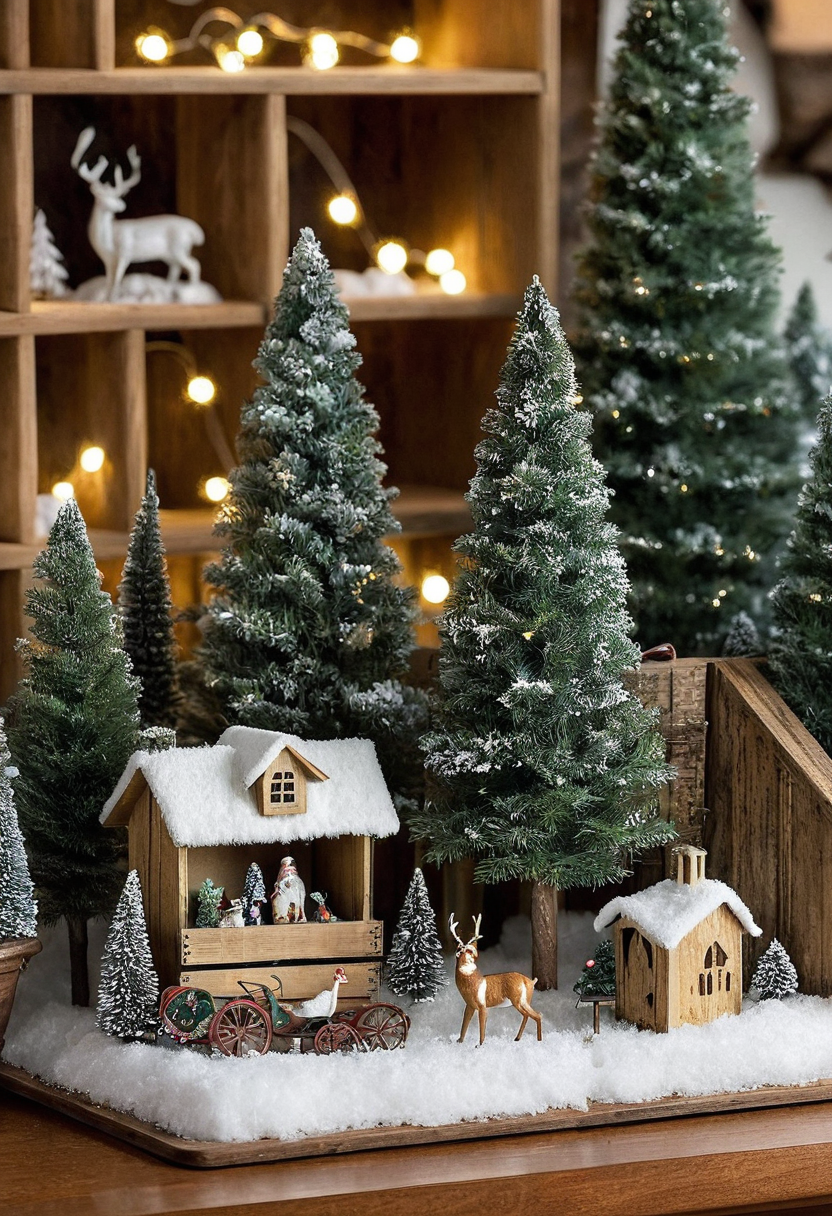
This organizational strategy often appeals to homeowners wanting flexible, story-like holiday displays. Wooden crates with miniature elements typically provide three-dimensional environments while utilizing repurposed materials.
Design consideration: Wooden displays often require appropriate finishing and treatment, while electrical elements typically need battery operation for safety and portability.
Practical benefit: Modular displays often provide flexible arrangement options, while repurposed materials typically support sustainable decoration practices and budget consciousness.
9. Natural Candle Enhancement: Organic Light Features
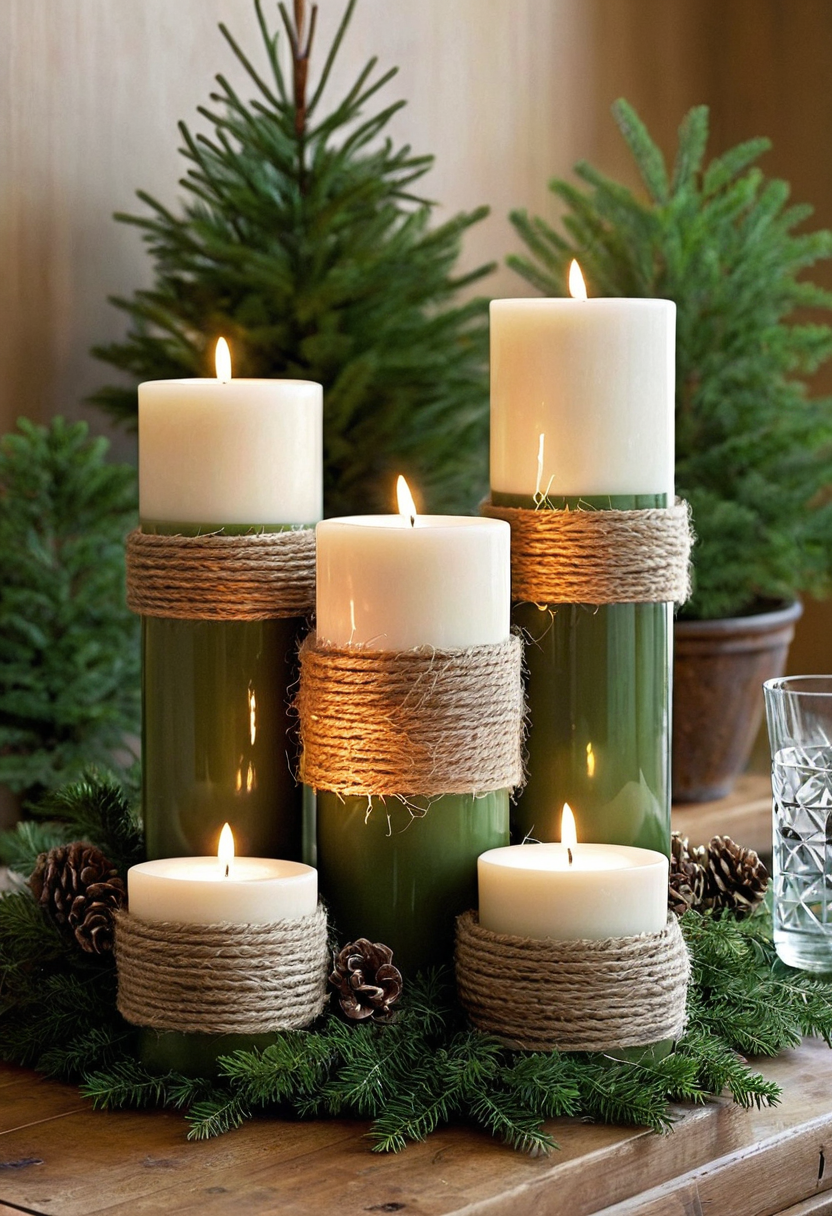
This atmospheric approach often appeals to homeowners wanting warm, textural lighting displays. Twine-wrapped candles with natural elements typically create cozy environments while incorporating sustainable materials.
Design consideration: Candle displays often require fire safety precautions and appropriate holders, while natural materials typically need consideration of flammability and heat resistance.
Practical benefit: Natural lighting often creates intimate, relaxing atmospheres, while battery-operated alternatives typically provide safety benefits essential for family environments.
10. Whimsical Character Creation: Playful Natural Crafts
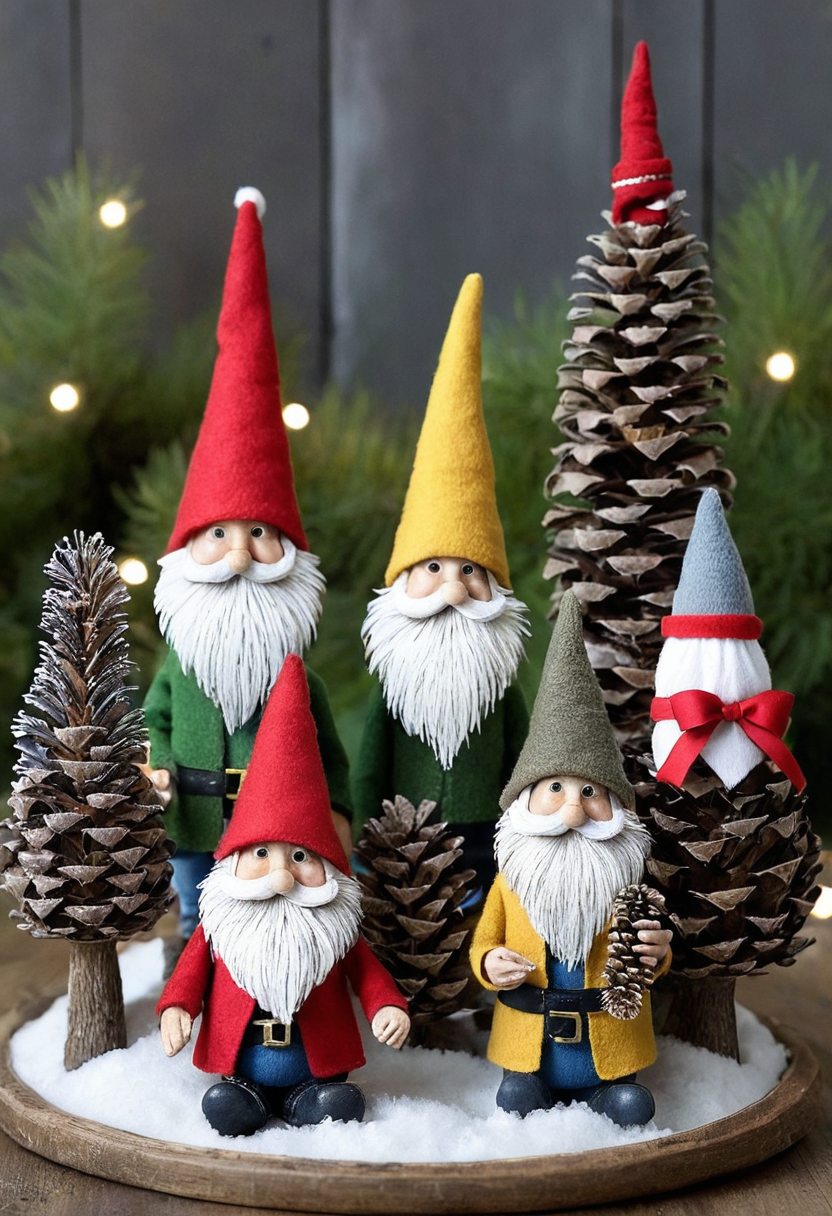
This creative approach often appeals to families with children wanting fun, engaging holiday projects. Pinecone characters with fabric accessories typically provide craft activities while creating playful decorative elements.
Design consideration: Craft projects often require appropriate materials for durability and safety, while character displays typically need secure assembly and child-safe construction.
Practical benefit: Playful elements often engage children in holiday preparation, while creative projects typically provide educational opportunities about natural materials and craftsmanship.
11. Vertical Display Innovation: Space-Saving Arrangement
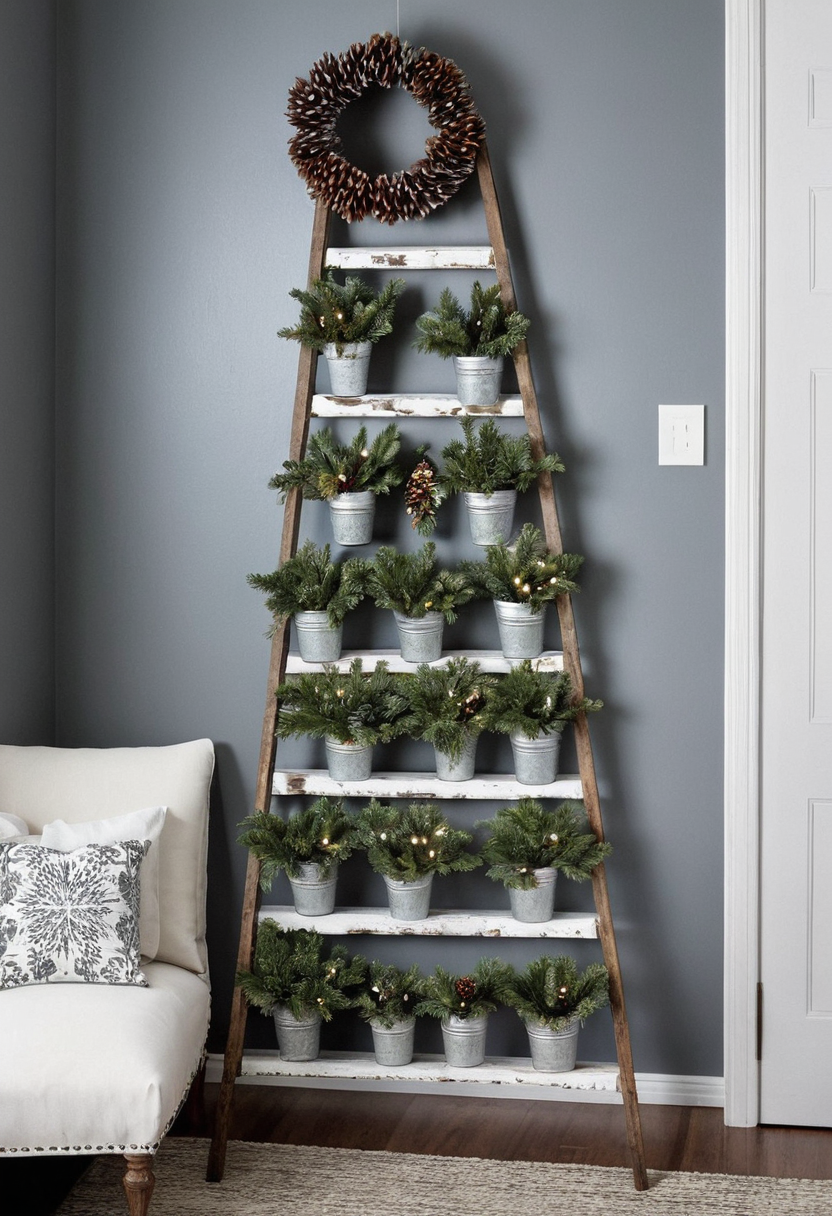
This spatial strategy often appeals to homeowners with limited floor space wanting maximum decorative impact. Ladder displays with multiple wreaths typically utilize vertical space while creating impressive visual statements.
Design consideration: Vertical installations often require secure mounting and weight distribution evaluation, while ladder displays typically need appropriate spacing and electrical safety.
Practical benefit: Vertical solutions often maximize decoration impact, while space-saving designs typically preserve floor areas for daily living activities and traffic flow.
12. Themed Ornament Collections: Cohesive Tree Decoration
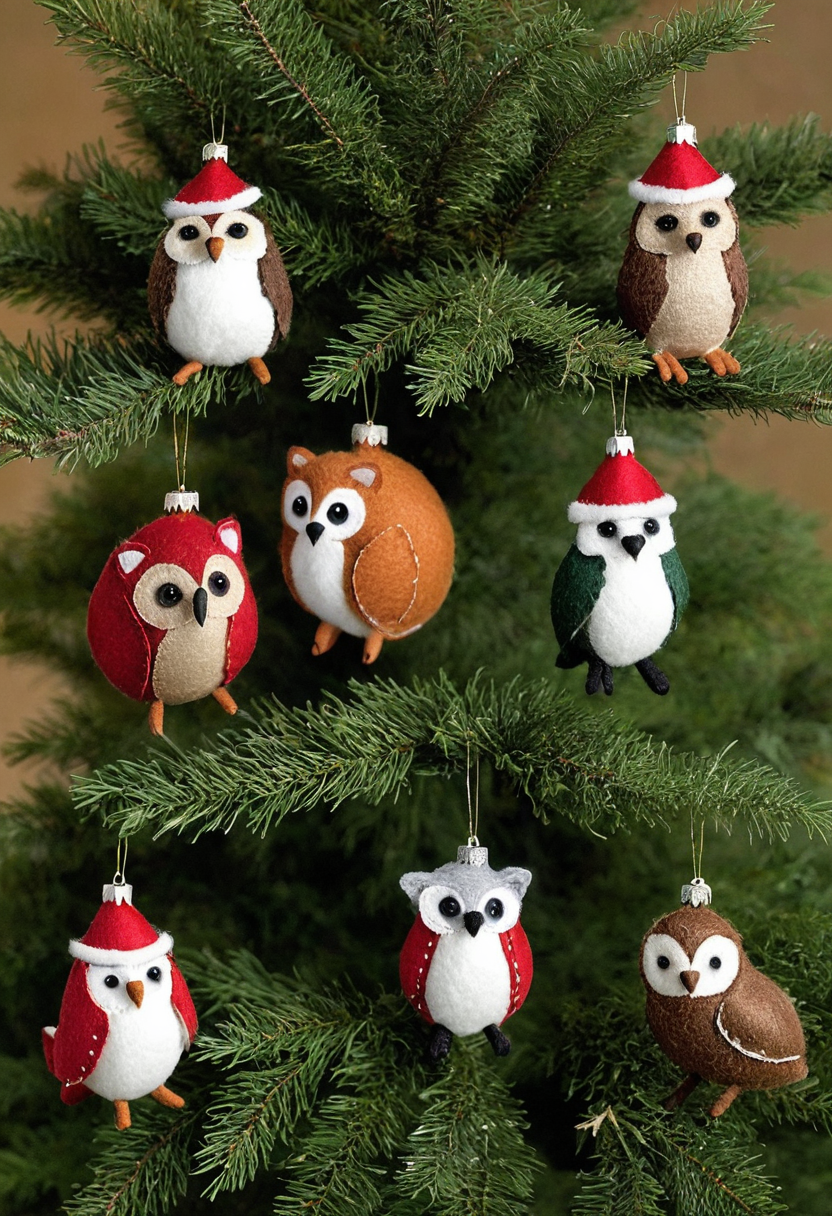
This curation approach often appeals to families wanting unified, story-driven tree themes. Wildlife ornament collections typically create educational displays while maintaining visual cohesion.
Design consideration: Themed collections often require variety within unity to prevent monotonous appearances, while mixed materials typically need coordination for balanced visual weight.
Practical benefit: Cohesive themes often create more impactful displays, while educational elements typically provide learning opportunities about wildlife and natural ecosystems.
13. Natural Material Lighting: Organic Illumination Enhancement
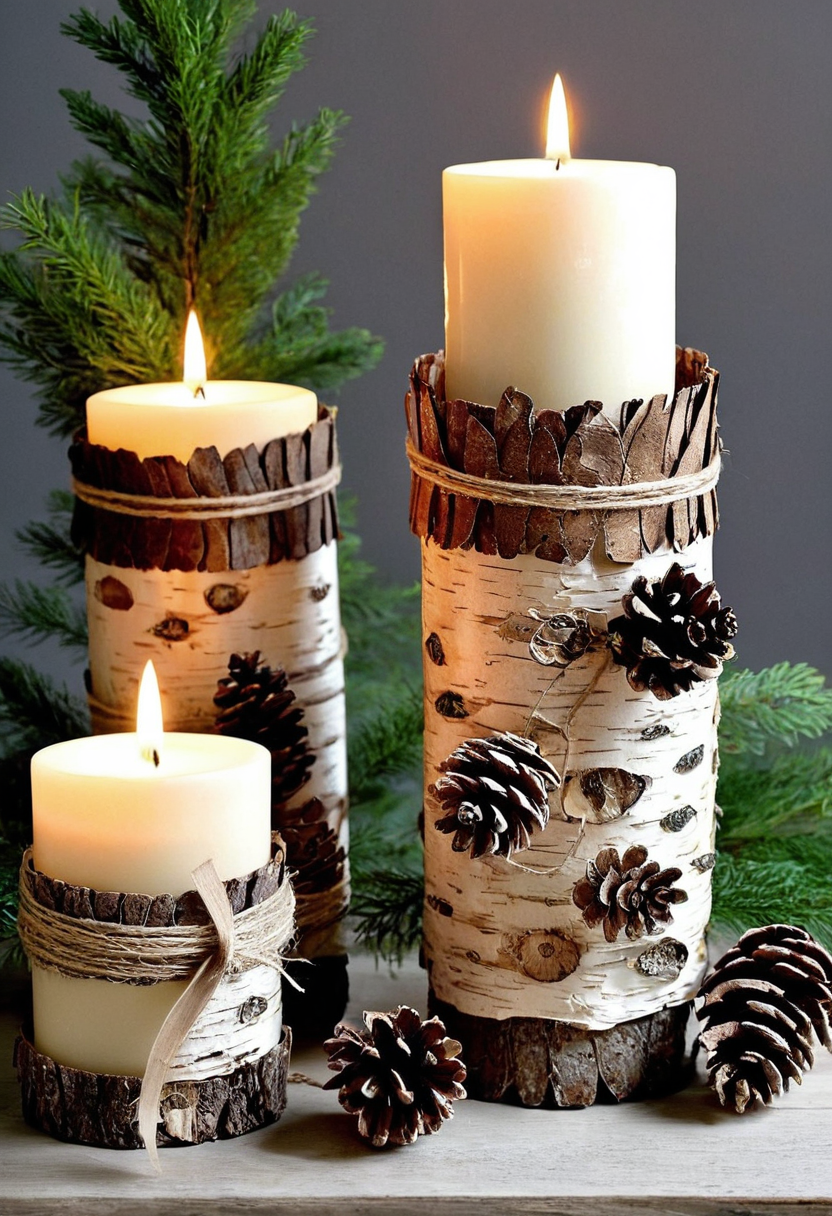
This atmospheric strategy often appeals to homeowners wanting authentic, textural lighting features. Birch bark candle wraps typically create natural ambiance while incorporating foraged materials.
Design consideration: Natural wrapping materials often require fire safety evaluation and appropriate distance from flames, while bark elements typically need proper preparation and treatment.
Practical benefit: Natural materials often provide authentic forest atmospheres, while sustainable decoration typically supports environmental consciousness and budget-friendly approaches.
14. Repurposed Container Gardens: Sustainable Holiday Displays
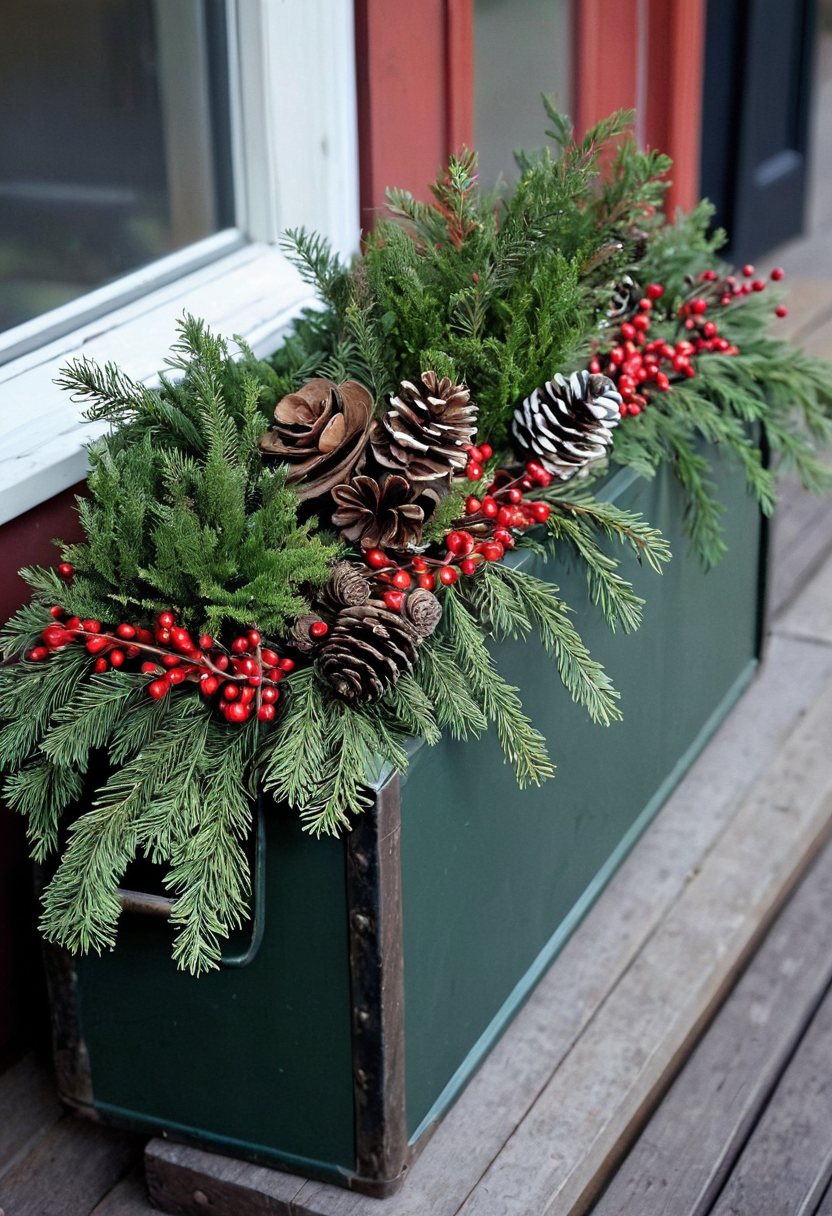
This environmental approach often appeals to homeowners prioritizing sustainability and vintage aesthetics. Toolbox planters with seasonal elements typically provide functional beauty while supporting material reuse.
Design consideration: Repurposed containers often require waterproofing and drainage consideration, while vintage items typically need evaluation for structural integrity and safety.
Practical benefit: Sustainable practices often support environmental values, while repurposed materials typically provide unique character and cost-effective decoration solutions.
15. Large-Scale Natural Art: Statement Wall Decoration
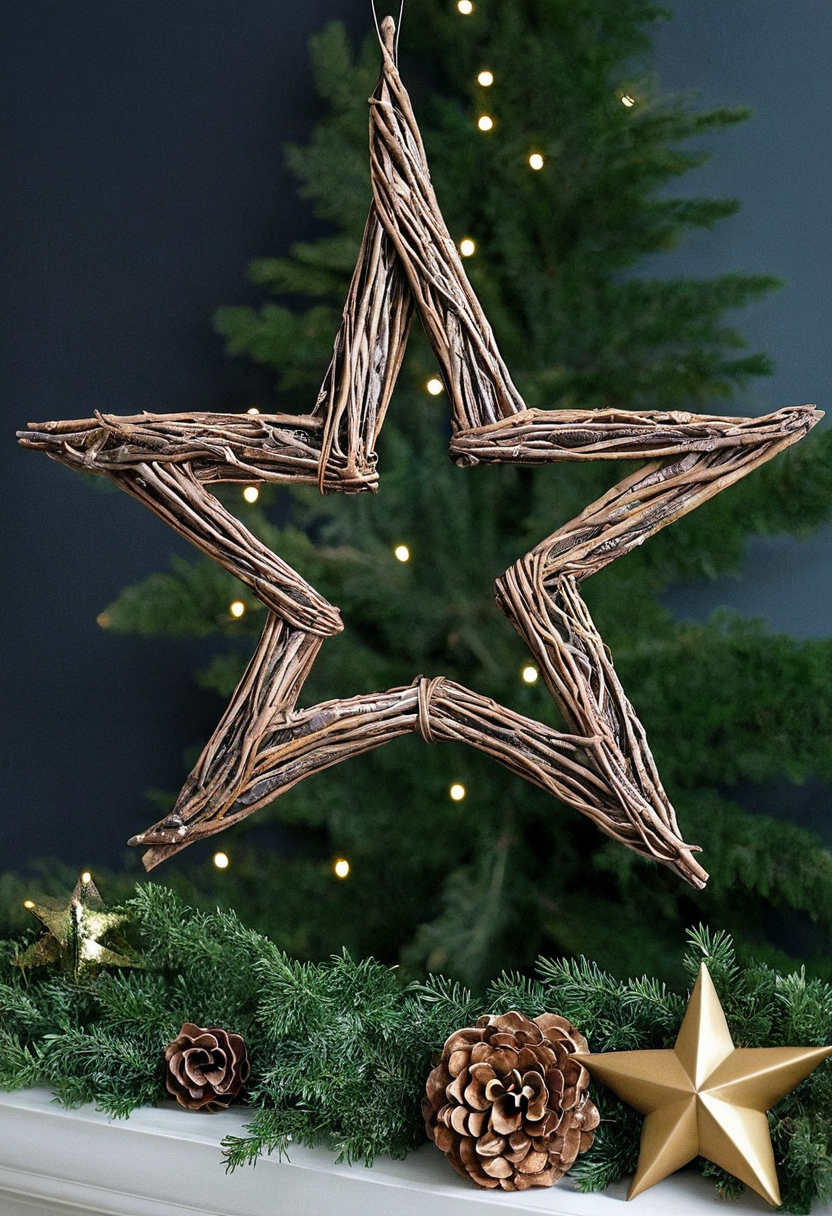
This artistic approach often appeals to homeowners wanting impressive, handcrafted focal points. Twig star constructions typically create dramatic wall features while incorporating foraged materials.
Design consideration: Large installations often require secure mounting and appropriate wall anchoring, while twig constructions typically need weather-resistant assembly methods.
Practical benefit: Statement pieces often provide maximum visual impact, while handcrafted elements typically create unique, irreplaceable character that reflects personal creativity.
16. Traditional Textile Display: Heritage Fabric Integration
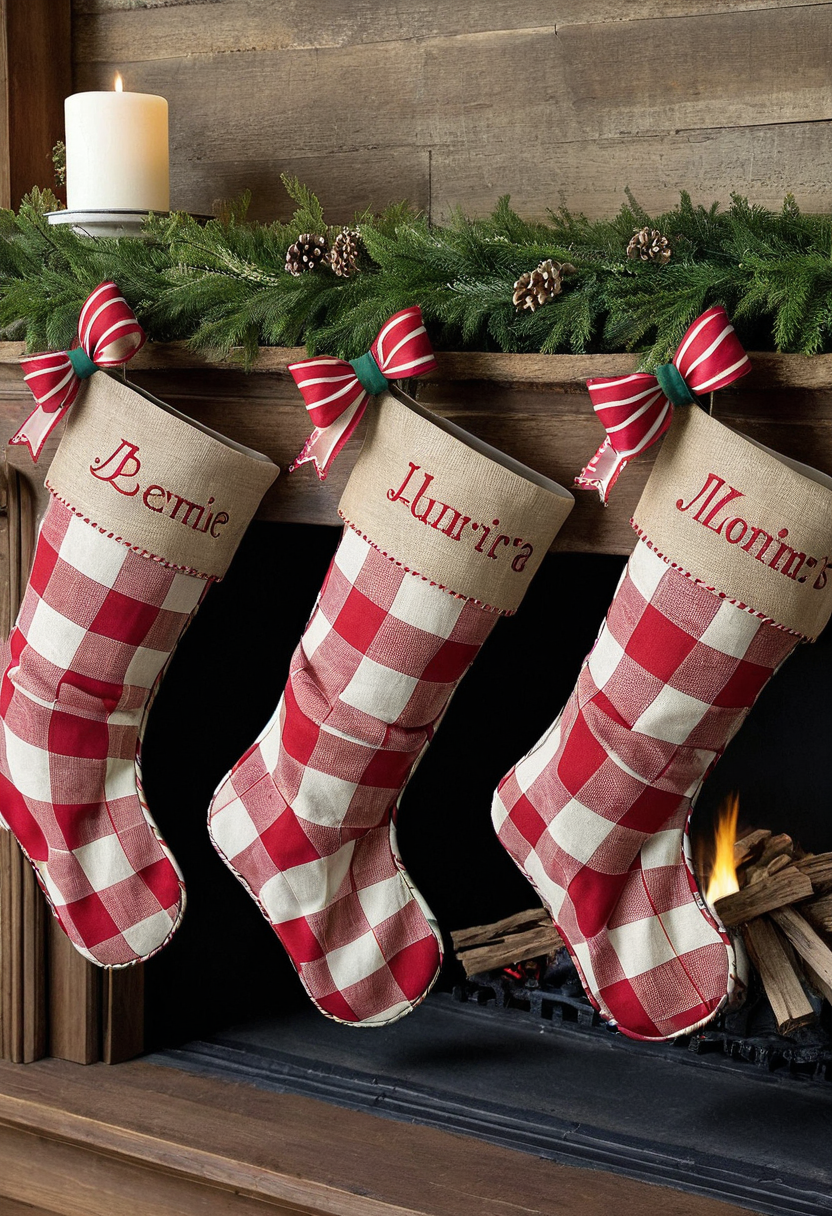
This comfort strategy often appeals to families appreciating traditional patterns and cozy textures. Plaid and burlap stockings typically create nostalgic environments while incorporating classic holiday textiles.
Design consideration: Textile displays often require appropriate hanging systems and weight distribution, while traditional fabrics typically need consideration of cleaning and storage requirements.
Practical benefit: Traditional textiles often create emotional connections to holiday memories, while classic patterns typically provide timeless appeal that transcends decorating trends.
17. Fresh Greenery Integration: Living Holiday Elements
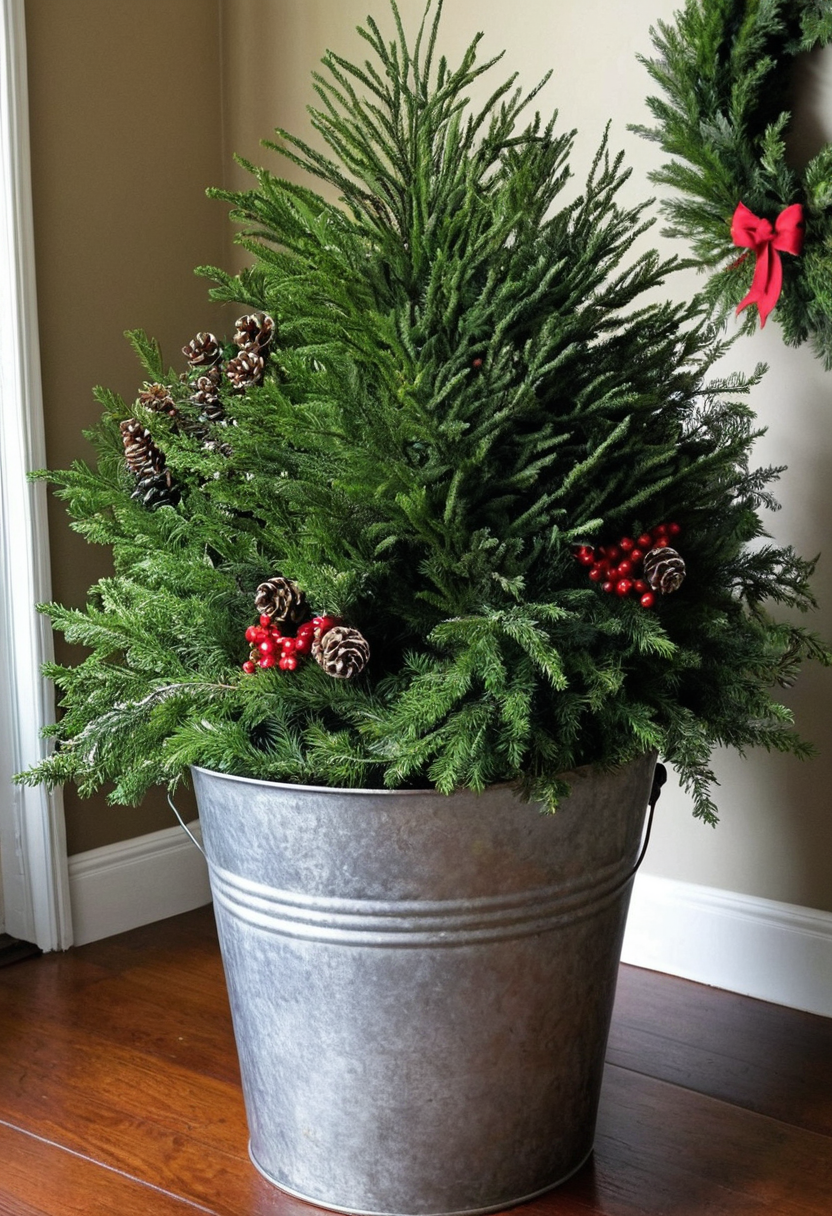
This natural approach often appeals to homeowners wanting authentic, aromatic holiday displays. Galvanized buckets with fresh evergreens typically provide pleasant scents while incorporating sustainable materials.
Design consideration: Fresh materials often require regular maintenance and water management, while metal containers typically need drainage and rust prevention consideration.
Practical benefit: Fresh greenery often provides natural aromatherapy, while living elements typically create stronger connections to outdoor winter environments.
18. Natural Bead Integration: Organic Decorative Elements

This minimalist strategy often appeals to homeowners appreciating Scandinavian-inspired simplicity. Wooden bead garlands typically provide neutral accents while incorporating sustainable materials.
Design consideration: Wooden elements often require appropriate finishing for longevity, while garland installations typically need secure mounting and appropriate spacing.
Practical benefit: Natural materials often provide versatile decoration options, while neutral elements typically coordinate easily with changing seasonal color schemes.
19. Log Foundation Display: Forest-Inspired Centerpieces
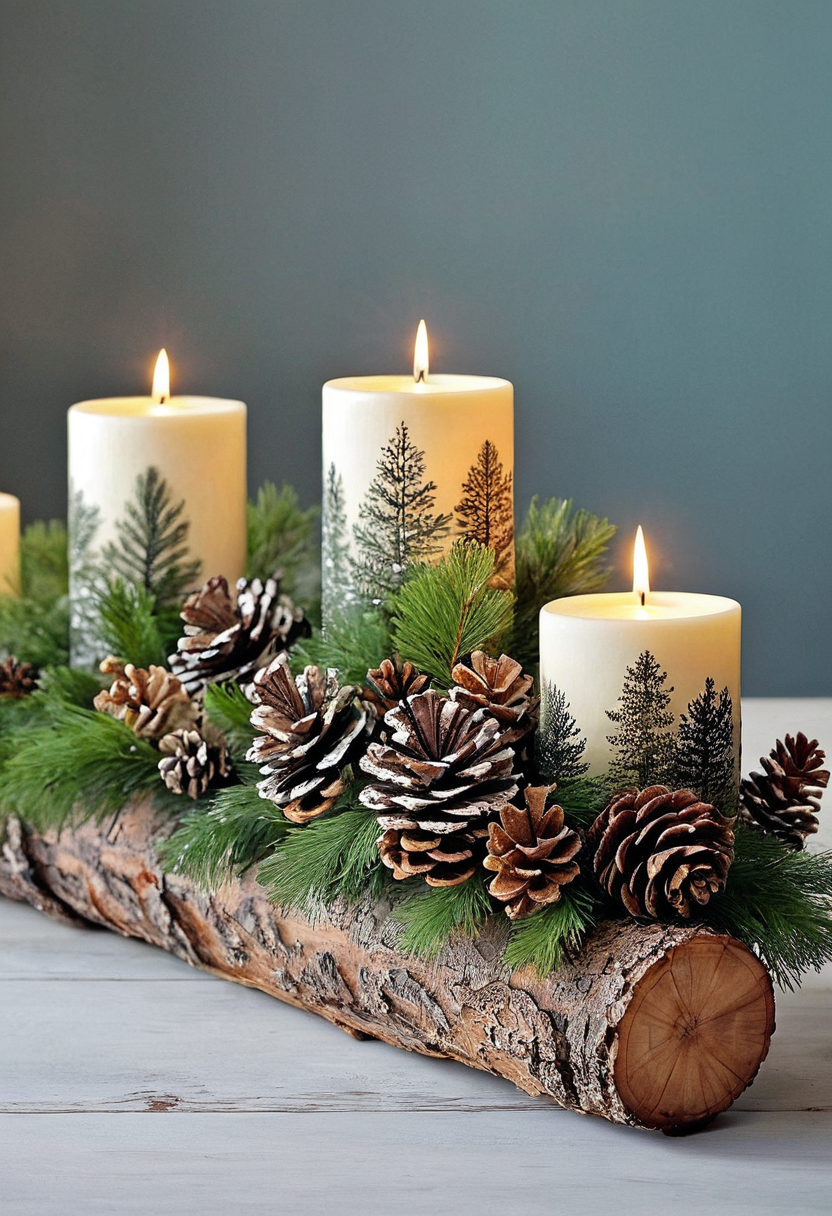
This rustic approach often appeals to homeowners wanting authentic woodland atmospheres. Log slice candle displays typically create forest-like environments while incorporating sustainable materials.
Design consideration: Log displays often require appropriate treatment and sealing, while candle placement typically needs fire safety evaluation and appropriate clearances.
Practical benefit: Natural foundations often provide authentic character, while sustainable materials typically support environmental consciousness and budget-friendly decoration approaches.
20. Functional Message Display: Interactive Holiday Communication

This practical strategy often appeals to families wanting customizable, functional holiday elements. Chalkboard displays with natural frames typically provide communication opportunities while incorporating rustic aesthetics.
Design consideration: Chalkboard installations often require appropriate mounting and accessibility, while natural framing typically needs treatment for indoor environmental conditions.
Practical benefit: Functional displays often provide practical utility, while customizable elements typically allow for seasonal updates and personal family communication.
21. Vintage Lighting Collection: Nostalgic Illumination Features
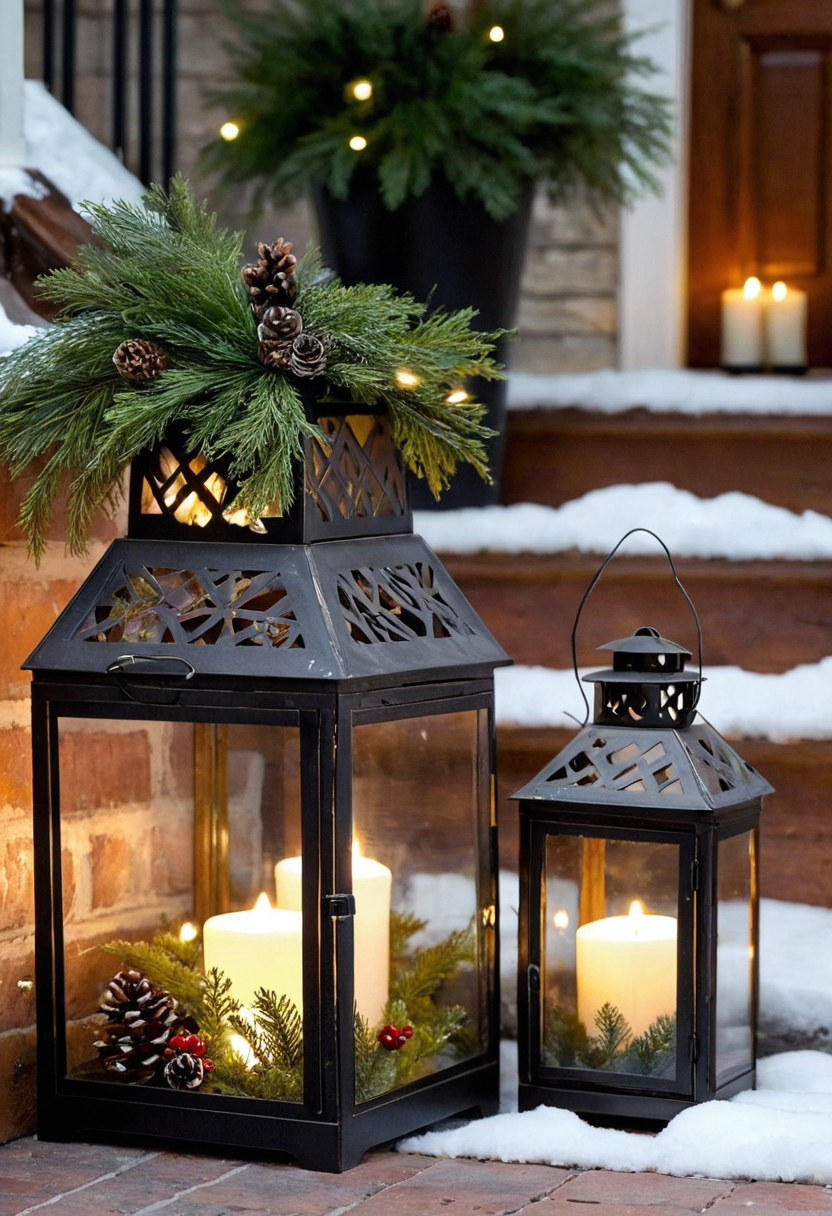
This atmospheric approach often appeals to homeowners appreciating historical lighting aesthetics. Antique lantern collections typically create warm, intimate environments while showcasing vintage craftsmanship.
Design consideration: Vintage electrical items often require professional evaluation for safety, while battery-operated alternatives typically provide safer options for antique-style displays.
Practical benefit: Historical lighting often creates unique ambiance, while vintage collections typically provide conversation topics and connections to traditional holiday celebrations.
22. Foraged Material Wreaths: Natural Circular Displays
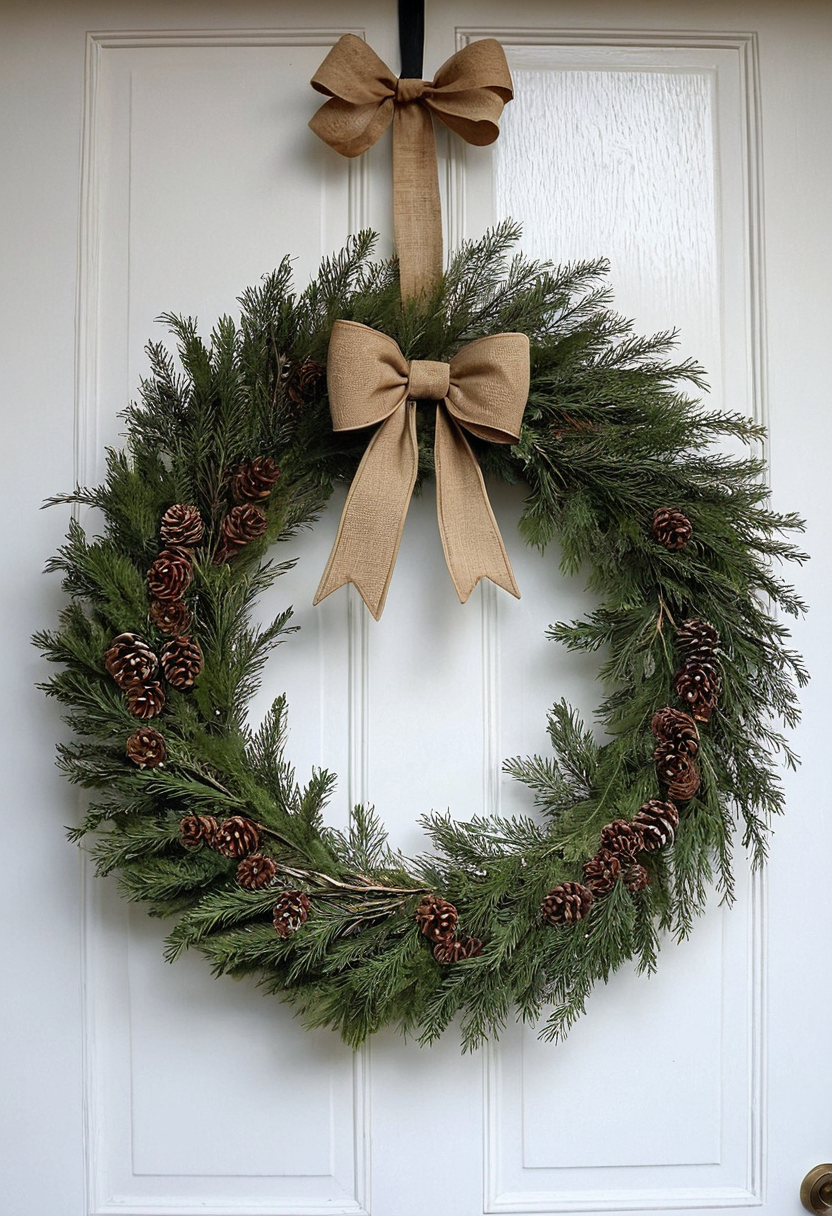
This organic strategy often appeals to homeowners wanting authentic, locally sourced decorations. Twig wreaths with natural accents typically provide sustainable decoration while incorporating regional materials.
Design consideration: Foraged materials often require proper cleaning and treatment, while wreath construction typically needs durable assembly methods for seasonal handling.
Practical benefit: Local materials often provide unique regional character, while sustainable practices typically support environmental consciousness and educational opportunities about local ecosystems.
23. Comfort Textile Integration: Cozy Atmosphere Enhancement
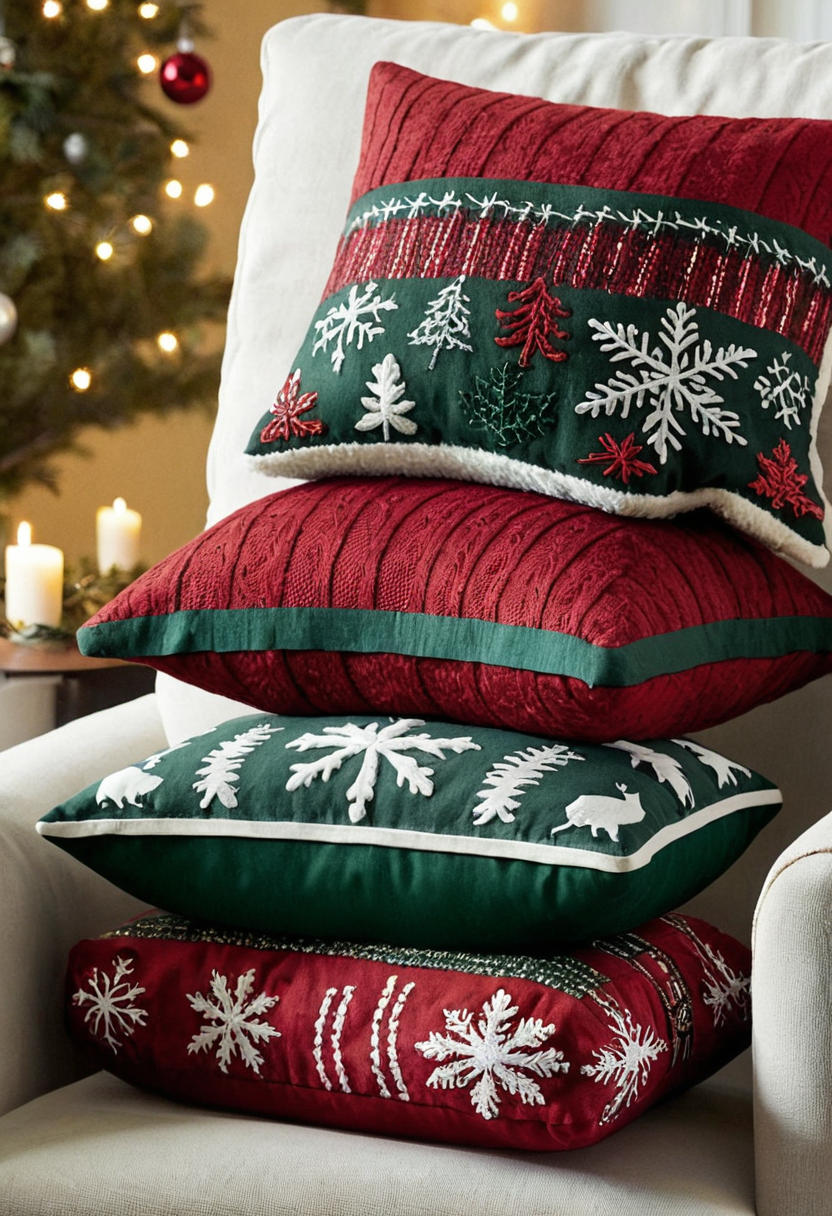
This comfort approach often appeals to homeowners wanting inviting, touchable holiday environments. Textured throw pillows with natural patterns typically create warm, welcoming spaces while providing seasonal comfort.
Design consideration: Holiday textiles often require storage consideration and seasonal rotation planning, while varied textures typically need coordination to prevent overwhelming small spaces.
Practical benefit: Comfort elements often encourage family gathering, while seasonal textiles typically provide affordable ways to transform living spaces for holiday celebrations.
Creating Your Woodsy Holiday Environment
Understanding these decoration approaches often helps homeowners create rustic holiday displays that successfully balance natural beauty with indoor safety and functionality requirements. Effective implementations typically start with proper material treatment and fire safety consideration, then layer in sustainable elements and handcrafted details that reflect personal style and family values.
Successful woodsy Christmas projects often prioritize authentic materials and safe installation methods while ensuring decorations enhance family gathering experiences and support sustainable practices. The result typically creates warm, inviting environments that honor natural beauty while providing safe, functional holiday celebrations.
When planning your rustic holiday decoration, consider how these elements work together to create environments that reflect both natural appreciation and practical family needs. The most effective designs often balance authentic materials with safety requirements while ensuring all installations support daily living and family activities.
Remember: For any electrical installations, open flame considerations, or natural material treatments related to woodsy holiday decorating, always prioritize fire safety, ensure proper material preparation for indoor use, and consult with professionals when installing electrical elements or structural modifications.



